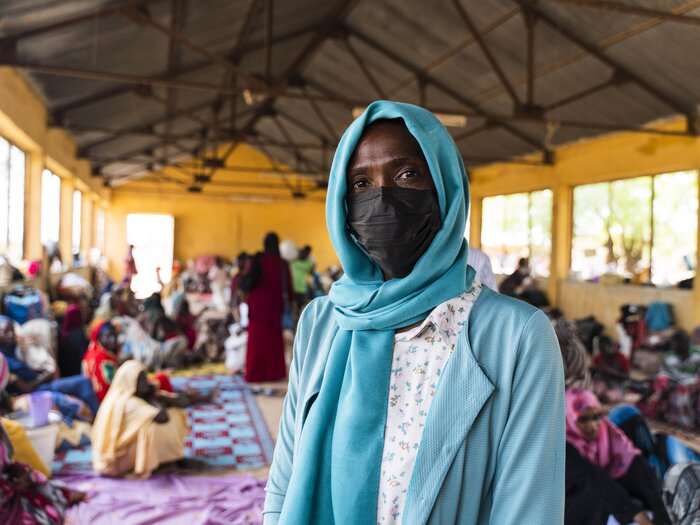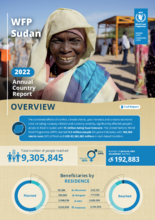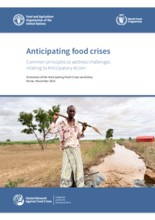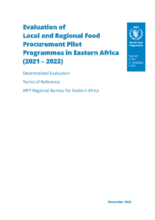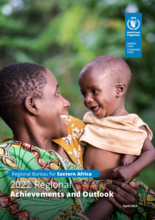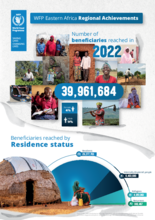Sudan
- Over 20 million
- people projected to be food insecure
- 5 million
- people displaced both inside and outside the country since April 2023
- 48.6 million
- population
The humanitarian situation in Sudan is teetering on the brink of catastrophe after conflict erupted across the country in the middle of April 2023. Hunger was already on the rise, with each year since 2020 registering record levels food insecurity which the ongoing fighting is now worsening. More than 6 million people are on the edge of famine and 20.3 million people – 42 percent of the population – face acute food insecurity.
Violence continues to spread, which could plunge millions more into hunger, while making it harder for farmers to produce key staple crops as prices of seeds, fertilizers, and fuel are soaring while supply chains and trade routes to transport goods are disrupted.
After a brief pause due to ongoing unrest and insecurity, WFP restarted its operations to address the immediate needs of refugees, host communities and internally displaced people. WFP has activated its highest level of emergency response for the operation.
What WFP is doing in Sudan
-
Food assistance
-
WFP provides food assistance as a first lifeline and works to ensure that people affected by shocks have access to food. Vulnerable refugees, internally displaced people, returnees and shock-affected resident communities receive either food or cash, to provide choice. Through Food Assistance for Assets programmes, communities receive food or cash to fill their immediate food gap. In return, community members work on projects including building or restoring infrastructure like roads or schools.
-
Nutrition
-
WFP aims to prevent and treat moderate acute malnutrition in emergency and recovery situations, reduce stunting (low height for age due to chronic malnutrition) and prevent mineral and vitamin deficiencies through nutrition-specific initiatives. WFP provides ready-to-use-supplementary food to children under 5 and pregnant or nursing mothers who have been diagnosed with MAM. In collaboration with the private sector, WFP launched VITAMINO, a micronutrient product that is distributed to internally displaced people, refugees and vulnerable residents, and that is sold through retail outlets to reach urban populations. WFP also supports national efforts to promote consumption of fortified foods and provides technical assistance for the development of relevant legislation and standards.
-
Food systems and safety nets
-
WFP helps to improve food systems and safety nets to strengthen the resilience of food-insecure families. Through training in vocational skills, people are able to improve their livelihood opportunities and increase their income. WFP also supports farmers in accessing markets, while improving irrigation systems to boost agricultural productivity.
-
Post-harvest losses
-
Farmers in Sudan lose an estimated 30 percent of their crops after harvest, often due to improper storage. To reduce post-harvest losses, WFP is promoting the use of hermetic storage bags and airtight silos among smallholder famers, thereby creating a market demand. Farmers improve their profit margins, with more of their crops safely stored for selling on the market. Meanwhile, WFP is also engaging the private sector to make the hermetic bags readily available on the market at reasonable prices, which also helps to boost the local economy.
Sudan news releases
Go to pagePartners and donors
Find out more about the state of food security in Sudan
Visit the food security analysis pageContacts
Office
653 A Block 68 Arkawit, PO Box 913
Khartoum
Sudan

